

Home Guided Tours Day Trip Map Shomyoji Temple Links
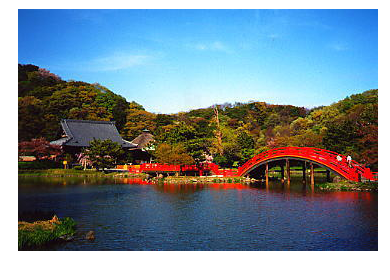 Shomyoji Temple started as a Jibutudo (hall where a private Buddha statues and ancestor tablets are displayed) by Hojo Sanetoki in the middle of 13th century. He was an authority of Kamakura Shogunate(12th~14th century). He constructed a private villa and built Jibutudo at this geopolitically important Kanazawa. The temple was expanded by his son, Akitoki and grandson, Sadaaki to construct the magnificent Shichido Garan (Buddhist monastery consisting of seven halls) with three story pagoda and Jodo Teien (pure land garden). The landscape is shown in “Shomyoji Ezu narabini Kekkai (layout of Shomyoji Temple and its boundaries)” established in 1323. This is an actual drawing of how Shomyoji Temple and surrounding area looked like 700 years ago. After Kamakura Shogunate was established at the end of 12th century, Kamakura developed into big city and demanded large volume of rice and goods. Mutuura Harbor in Tokyo Bay was developed into the main port and a great deal of supplies was carried through Asahina Kiridoshi, cut through pass. Kanazawa Hojo Clan attempted to rule this geopolitically and strategically important Kanazawa by founding Shomyoji Temple.
Shomyoji Temple started as a Jibutudo (hall where a private Buddha statues and ancestor tablets are displayed) by Hojo Sanetoki in the middle of 13th century. He was an authority of Kamakura Shogunate(12th~14th century). He constructed a private villa and built Jibutudo at this geopolitically important Kanazawa. The temple was expanded by his son, Akitoki and grandson, Sadaaki to construct the magnificent Shichido Garan (Buddhist monastery consisting of seven halls) with three story pagoda and Jodo Teien (pure land garden). The landscape is shown in “Shomyoji Ezu narabini Kekkai (layout of Shomyoji Temple and its boundaries)” established in 1323. This is an actual drawing of how Shomyoji Temple and surrounding area looked like 700 years ago. After Kamakura Shogunate was established at the end of 12th century, Kamakura developed into big city and demanded large volume of rice and goods. Mutuura Harbor in Tokyo Bay was developed into the main port and a great deal of supplies was carried through Asahina Kiridoshi, cut through pass. Kanazawa Hojo Clan attempted to rule this geopolitically and strategically important Kanazawa by founding Shomyoji Temple.
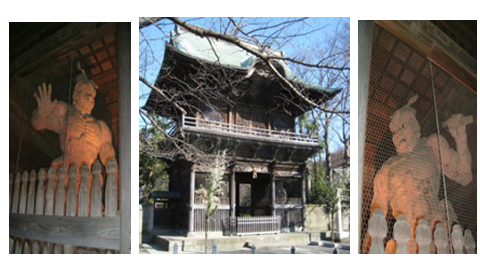 Shichido Garan was constructed at the age of foundation, but many halls and temples were lost after the ruin of Kanazawa Hojo Clan. At present, Red Gate, Temple Gate with Guarding Gods (Niomon and Niozo), Kondoh (Main Hall), Temple Bell, Belfry, Shakado (Shakamuni Buddha Hall) and Jodo Teien (Pure Land Garden) are still remained. Shomyoji Temple precinct was designated as the national important cultural properties in 1922.
Shichido Garan was constructed at the age of foundation, but many halls and temples were lost after the ruin of Kanazawa Hojo Clan. At present, Red Gate, Temple Gate with Guarding Gods (Niomon and Niozo), Kondoh (Main Hall), Temple Bell, Belfry, Shakado (Shakamuni Buddha Hall) and Jodo Teien (Pure Land Garden) are still remained. Shomyoji Temple precinct was designated as the national important cultural properties in 1922.
Niomon is the main gate of Shomyoji Temple and its pure land. A pair of Niozo, Guarding Gods of Buddhist is installed at the gate to guard the sacred precinct of the temple. It is said that visitor’s souls are purified by passing through the gate.
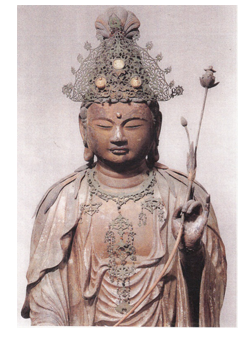 Kondoh and Miroku Bosatsu:
Kondoh and Miroku Bosatsu:Kondoh is the main hall of Shomyoji Temple. Honzon (principal image) of the temple is the standing statue of Miroku Bosatsu (Maitreya Bodhisattvas) enshrined in Kondoh. This is the national important cultural properties. Two wall paintings behind Honzon are drawing Miroku Bosatsu in Pure Land and Arrival of Miroku Bosatsu, in addition, Shumidan(Pedestal for Honzon)and others are also designated as national important cultural properties.
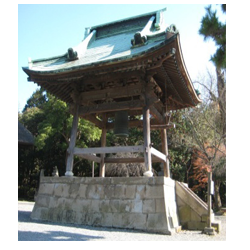
Hojo Sanetoki donated the first bell to commemorate for the seventh memorial year from his father’s death in 1269. Hojo Akitoki recasted the current bell in 1301. The bell is about 127cm high, 70cm in diameter and 375kg in weight.
Jodo Teien (Pure Land Garden) was designed to represent Buddhist Pure Land in the real world. The garden consists of Ajigaike Pond in the center with Nakanoshima Island, arched bridge and flat one connecting this world and other world. It is said that Higan, or other world is Miroku Jodo pure land where the principal image, Miroku Bosatsu is to live. The arched bridge which connects with this world and Nakanoshima Island represents the hardships from the past to the present. If you follow the teaching of the Buddha from Nakanoshima Island, the present, it is suggested that you will be able to enter Miroku Jodo, the other world, by the flat bridge.
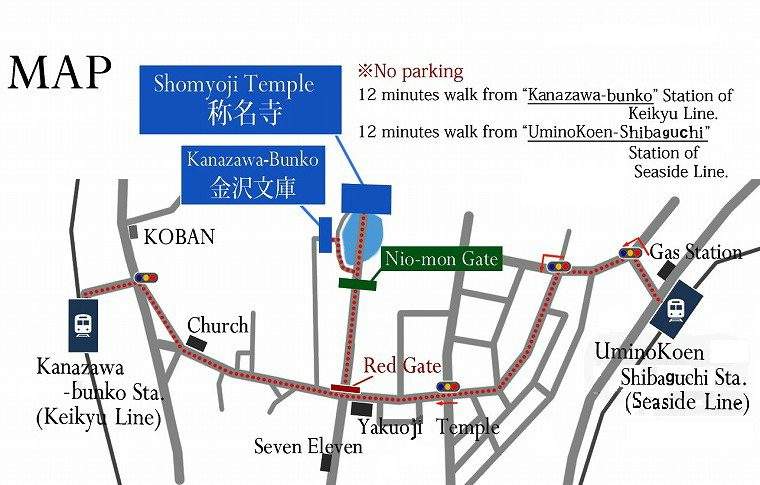
[Page Top]